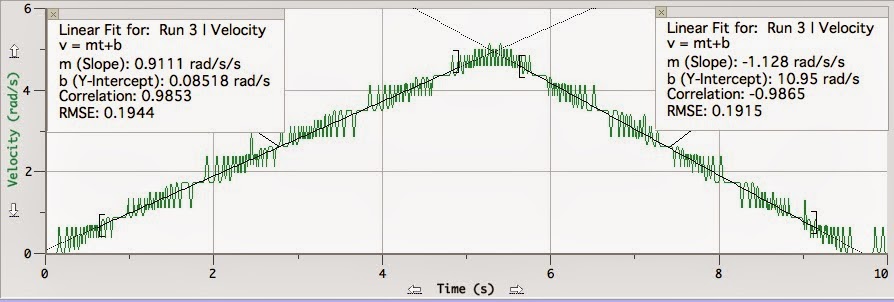Purpose
To determine the height the meter stick reaches after colliding with the clay through using the conservation of energy and momentum and doing it experimentally.
Procedure + Lab Equipment
What we used:
- meter stick
- clay
- video camera
- logger pro
- ring stand
- we took measurements of the meter stick and clay
- we calculated how how the meter stick would reach after collision
- we set the meter stick on the ring stand and the clay at the appropriate spot
- we used the video camera to record a video to analyze how high the meter stick actually reached
Data
(M) mass of meter stick: 0.083 kg
(m) mass of clay: 0.01592 kg
(H) initial height: 1.135 m (this is when the meter stick is parallel with the floor)
Data Analysis + Calculations
  |
| These are the calculations for the expected height that the meter stick will reach We expect the meter stick to reach a height of 0.6045 m |
  |
| This is the video analysis for the experimental height the meter stick reached The y-axis gives us the height reached, which is 0.7642 m |
Summary
In our lab, we used the conservation of energy and momentum to help us determine the height that the meter stick would reach after colliding with the clay. Our calculated height was 0.6045 m while our experimental height was 0.7643m. Our percent error was about 26%, more than the accepted value.
What might have gone wrong in the experiment is that the meter stick didn't start exactly at the end, we also didn't measure the initial height for this video capture. What we did was measure the initial height once when it was horizontal, but not through each video capture. We also don't account for friction or air resistance as the meter stick swings.














